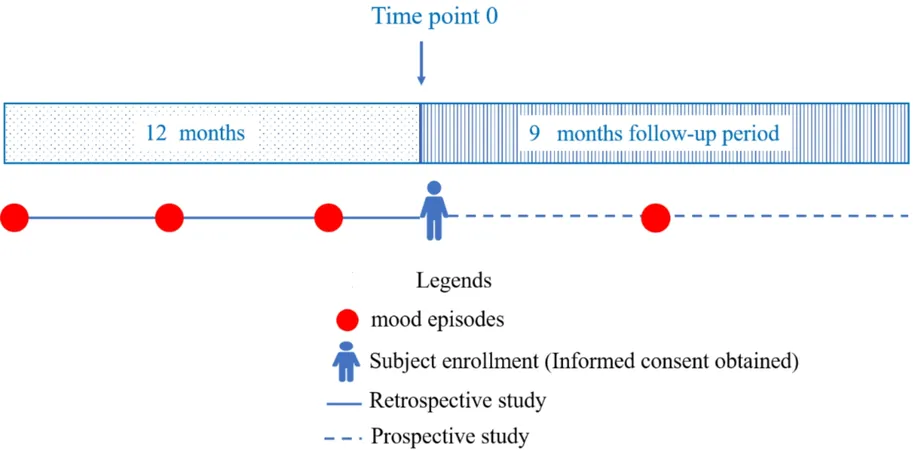
Unlocking the Secrets of Bipolar Disorder: Key Factors Affecting Mania and Depression Episodes in China
2025-05-20
Author: Rajesh
Understanding Bipolar Disorder: A Deep Dive
Bipolar disorder (BD) can be a whirlwind of emotions, oscillating between manic highs and deep depressive lows. But what influences how often these episodes occur? A recent multicenter study conducted in China sheds light on this intricate issue, uncovering vital factors that could significantly alter the treatment and long-term outcomes for patients.
The Study: A Comprehensive Look at 520 Patients
The researchers enrolled 520 patients diagnosed with bipolar disorder, utilizing a robust longitudinal cohort design. By analyzing sociodemographic and clinical data, they employed Poisson regression to pinpoint the determinants that affect the frequency of manic and depressive episodes.
Key Findings: What Triggers More Episodes?
Some tantalizing insights emerged from the study. For manic episodes, researchers found that: - **Shorter Education**: Patients with fewer years of schooling had a higher likelihood of experiencing manic episodes (OR = 1.03). - **Mixed First Episode**: Those whose first episode was mixed had a strikingly higher chance of becoming manic later on (OR = 2.33). - **Early Diagnosis**: An earlier age of diagnosis correlated with increased frequency of manic episodes (OR = 1.03). - **Substance Use**: A history of substance use disorder amplified the risk (OR = 1.41). - **Psychotic Symptoms**: The presence of psychotic symptoms also played a role (OR = 1.18). - **Medication Choices**: Use of antidepressants (OR = 1.52) and non-use of mood stabilizers (OR = 1.57) were linked to more frequent manic episodes.
Depressive Episodes: Different Triggers Unveiled
Conversely, the study revealed that certain factors increased the frequency of depressive episodes: - **Gender**: Being male increased the likelihood of experiencing depressive episodes (OR = 1.22). - **Mood Stabilizers**: Unexpectedly, using mood stabilizers was associated with more depressive episodes (OR = 1.47). - **Bipolar II Diagnosis**: Patients diagnosed with bipolar II disorder experienced more depressive episodes compared to those with bipolar I (OR = 1.27).
Broader Implications: A Call for Tailored Treatments
The findings of this study are staggering. They not only highlight how critical it is to understand these influencing factors but also pave the way for more personalized treatment strategies. Addressing the educational, clinical, and medication-related aspects could potentially harness better long-term outcomes for individuals battling bipolar disorder.
The Bigger Picture: Why This Research Matters
BD is more than just mood swings; it's a chronic mental health condition affecting nearly 4.4% of people worldwide. With many patients relapsing within a year, frequent episodes can disrupt everyday life and relationships. By identifying what triggers these episodes, healthcare providers can refine their approaches, not only improving patient care but reducing the societal burden associated with bipolar disorder.
Looking Forward: Future Research Directions
While this study offers substantial insights, it also opens doors for future research in various dimensions—utilizing modern diagnostic frameworks and possibly exploring the genetic factors influencing BD. Such advancements could further illuminate the complexities of this condition, fostering a more effective approach to management and treatment.
In Conclusion: A Step Towards Better Management of Bipolar Disorder
In this era of mental health awareness, the implications of understanding bipolar disorder cannot be overstated. The findings from this study truly spotlight the nuances of treatment; addressing education, age of onset, and psychiatric comorbidities could prove vital for better managing and living with bipolar disorder.

 Brasil (PT)
Brasil (PT)
 Canada (EN)
Canada (EN)
 Chile (ES)
Chile (ES)
 Česko (CS)
Česko (CS)
 대한민국 (KO)
대한민국 (KO)
 España (ES)
España (ES)
 France (FR)
France (FR)
 Hong Kong (EN)
Hong Kong (EN)
 Italia (IT)
Italia (IT)
 日本 (JA)
日本 (JA)
 Magyarország (HU)
Magyarország (HU)
 Norge (NO)
Norge (NO)
 Polska (PL)
Polska (PL)
 Schweiz (DE)
Schweiz (DE)
 Singapore (EN)
Singapore (EN)
 Sverige (SV)
Sverige (SV)
 Suomi (FI)
Suomi (FI)
 Türkiye (TR)
Türkiye (TR)
 الإمارات العربية المتحدة (AR)
الإمارات العربية المتحدة (AR)